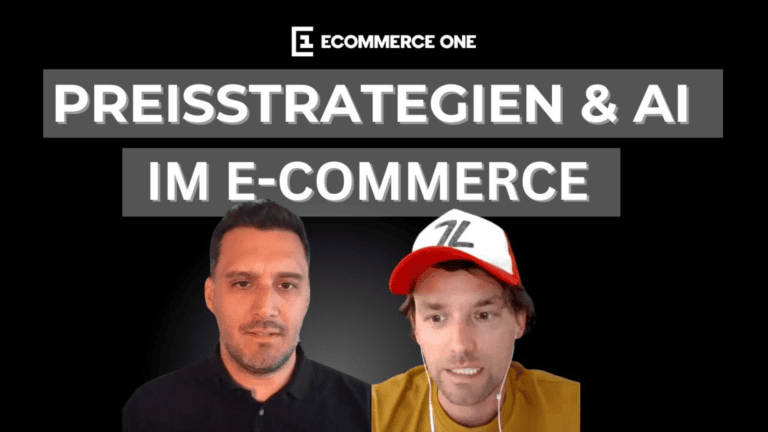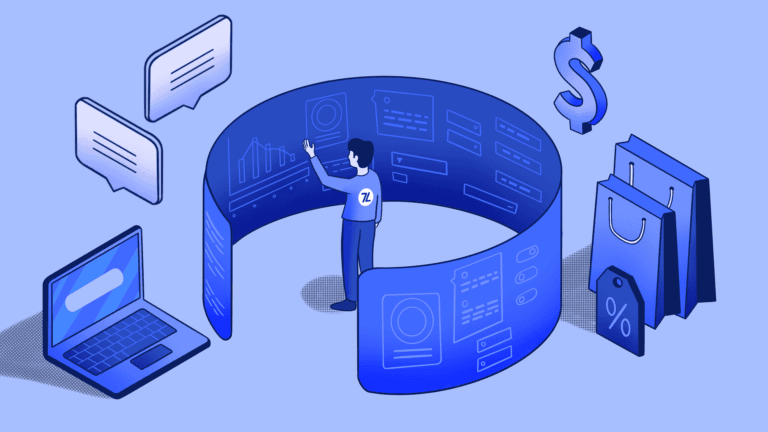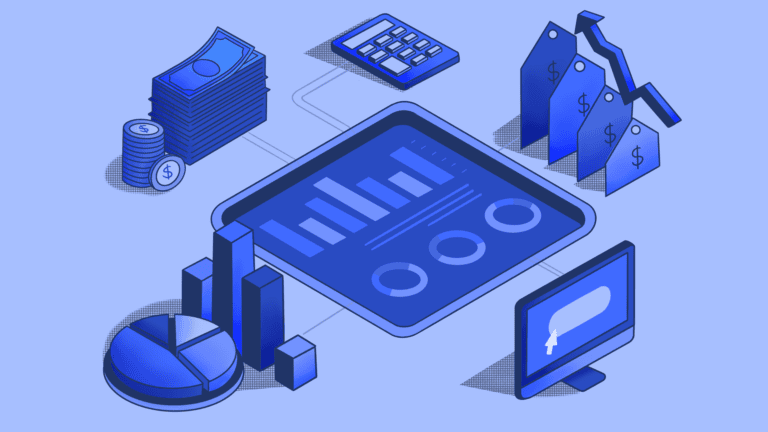Being one of the buzzwords for quite a while, the concept of NFT still comes across as an unconventional yet futuristic way of owning and trading assets – and, in general, one that’s not the easiest to understand. You must have found yourself being fascinated by its media exposure, as did everyone else. With this new blog post, we’ll explore precisely what an NFT is, pricing for NFTs, and how to get your pricing strategy ready for this unseen stream of revenue.
NFTs: What Is It, And Why Is It So Popular?
NFTs are short for nonfungible tokens, and most of them are part of the cryptocurrency Ethereum blockchain. NFTs are digital assets that users can own and trade online in simple terms. As it is created by using blockchain technology, an NFT is one of a kind and only has one owner at a time. The computer code can track the verifiable digital ownership of the products. NFT comes in many shapes: it can be an art piece, GIFs, videos and sports highlights, collectibles, sneakers, music, and even a tweet.
The NFT space has been embraced by gen-Z as a digital art marketplace and, more than that, an opportunity to be self-made millionaires at an early age. This boom of digital art trading indicates that the way people make money and how they spend it is ever-changing. Thus, the retail sector is flocking into the NFT-verse, where digitalization is the core of their products. Understanding the values of how NFT products are marketed and traded could help retailers revolutionize their source of profits like never before.
How to be successful in the virtual world?
Evaluating how much an asset on NFT is worth is like determining the value of a cluster of pixels. In reality, absurd as it may sound, teen artists are making millions of dollars by selling their artwork online. Everyday: The First 5000 Days is an art piece sold for $69 million as an NFT. In early 2021, RTFKT, a virtual sneaker company that makes NFTs on metaverse, collaborated with a teenage artist FEWOCiOUS to sell real and virtual sneakers. This collaboration yielded over $3.1 million, and in 6 minutes, they sold over 600 pairs. Later that year, Nike acquired them.
This new groundbreaking venture attracted many investments from big companies and artists. To be more precise, 299% is the increase in the year to year investment throughout 2020, and, naturally, it is an unmissable market for both businesses and consumers. With the metaverse coming to the EU, retailers everywhere need to be on top of new technologies coming into the scene and how they can offer new opportunities. Regarding NFTs, however, it remains ambiguous who is gaining money and who is following the trend. Successful businesses in this NFT investment race have proven to define their meaningful use of NFTs, creating their community of users, keeping their audience and users engaged, making the exclusive limited product “drops,” and withstanding the crypto swings.
Successful businesses in this NFT investment race have proven to define their meaningful use of NFTs, creating their community of users, keeping their audience and users engaged, making the exclusive limited product “drops,” and withstanding the crypto swings.
Pricing strategy for NFTs?
From music to sneakers, businesses, artists, and consumers increasingly invest in these digital assets for their incredible malleability. Interestingly, the only limitation to the creation of an NFT is production. Even though NFT is a digital asset, supply is ironically always restricted. Limited supply is arguably why the value of a cluster of pixels is so high. When the supply of an NFT or any product is limited, the perceived value of an asset will rise, provided this asset is high in demand.
The price set indicates how much consumers are willing to pay for it, which is the common understanding of the supply and demand relationship. In the case of an NFT, its value entirely depends on consumer willingness to pay. In other words, demand determines the price. Vast knowledge about how the market works and its seasonality is what makes and breaks the success of these virtual products. Dynamicpricing has been well deployed for conventional products to help retailers tap into many profit potentials. By applying the latest machine-learning-powered pricing technology, internal and external data is processed to optimize pricing.
Some players already do a bundle offering both virtual and physical products in the retail sector. Indeed, NFT products bear no costs of supply chain disruption or storage costs.
Thanks to this, retailers that adopt this tactic can enjoy a more extensive product portfolio while not worrying about inventory costs and increasing profit margins. For artists, for example, the invention of NFTs makes it more profitable to make art compared to the traditional way, as they can now directly sell to consumers. Additionally, they can also gain profits from the embedded royalties in blockchain technology whenever an NFT has new ownership. Whether the current high demand for NFTs is actual or just hype is debatable as we are still in the early days of these tokens.
It can also happen that sellers can’t make any sales if there is no demand for the products. One of the characteristics of successful businesses selling NFTs is that they can weather the fluctuations of NFTs themselves. After all, these tokens are fundamentally crypto, and their unpredictability is inevitably costly for small businesses.
Did you know?
Profit increases on average of 10% on average are possible for e-commerce retailers using with machine learning-based pricing software. 7Learnings has demonstrated this capability with A/B tests with customers from e-commerce and other retail sectors.
Predictive pricing for NFT
To predict the unpredictable, we need to rely on big data, which is when machine learning can do the heavy lifting. Machine learning is an AI-based computer science discipline that builds systems that can learn from data rather than explicitly programmed. Due to the sheer volume of data we produce, especially in the case of NFTs, where even the information of ownership is kept track of, the need and potential for machine learning have grown. Every transaction of the NFT product will be recorded and stored in the database to learn and re-learn the buying and selling behaviors throughout time. The fact that machine learning can manage and learn from trillions of observations makes data more manageable while saving time – and can help predict the severe fluctuations we see in NFTs every day.
The ideal solution is predictive pricing when it comes to price optimization and machine learning. This type of solution uses price elasticity and forecasting algorithms to predict the effect of price changes on KPIs defined. Predictive pricing for conventional products processes information regarding seasonality, inflation, inventory, competition, demand, and more to forecast a price that would bring in the highest returns for a retailer. And, unlike other pricing strategies, the benefit of predictive pricing is that costs are optimized in advance, with retailers knowing their impact before the change happens.
Essentially, there is no significant difference between real and virtual product pricing. Models are trained to recognize even non-obvious correlations when pricing with machine learning. Machine learning-powered pricing technology can process vast quantities of internal and external data, influencing pricing decisions well beyond what any human could manage. The machine knows data, and NFT is, in itself, a unit of data that is stored on Ethereum’s blockchain. Keep in mind that the value of an NFT could fluctuate at any point in time, for better or worse. In other words, the pricing strategy needs to be highly dynamic to reflect the NFT’s nature – meaning, its instability. Predictive pricing is crucial, as it can predict these fluctuations. The technology regularly runs different scenarios and test approaches to determine the optimal prices before going live with any adjustments, making sure any change is positive. Scenario testing is beneficial for conventional e-commerce retailers, as they often deal with frequent changes like seasonal or rotating product assortments that undergo several changes throughout the retail cycle. And for NFTs, with their ever-changing fluctuations, it can prove essential.
Although we are still in the early days of digital assets, the general hype of NFT amongst different businesses has proven that this is well on its way to being a multi-billion dollar industry soon. It is no longer a question of whether to sell NFT or not, but when. Even if done so, one can’t seem to do it right without optimizing data for both physical and digital products. Machine learning-based predictive pricing is one of the most potent, obvious, and shortest ways to elevate profits automatically.
How can 7Learnings help you implement NFT pricing for your business?
At 7learnings, we’re proud to be the first to implement this predictive pricing technology for NFTs. Right time, right place and right tools are the secret behind the resilience of many industry leaders. Modern tools like 7Learnings’ pricing solution make it affordable for any company to get started with machine learning-based pricing. If you are already selling something as futuristic as NFT sneakers, why even bother to rely on outdated pricing models? If you want to learn more about the potential of next-generation predictive pricing for your business, please reach out to us to arrange a product demo.
- Utilize leading deep learning technology: Machine learning has changed the retail pricing landscape. With 7Learnings’ powerful machine learning-based software, you access agile, adaptive technology that will keep you in pace with your competitors.
- Elevate your marketing and pricing strategies: Tap into the full potential of your data and holistically optimize your marketing activities and pricing decisions, looking and correlated and influential factors.
- Reach the highest level of automation: Our intelligent software takes the guesswork out of pricing and reduces manual effort. With a few clicks, you can forecast the impact of pricing changes on business goals. It’s the most intuitive price steering method!
- Make pricing predictable: With predictive pricing, retailers no longer need to manage a complex set of rules for pricing. Instead, they define their goals and the technology determines which prices will help them achieve them as quickly as possible.



